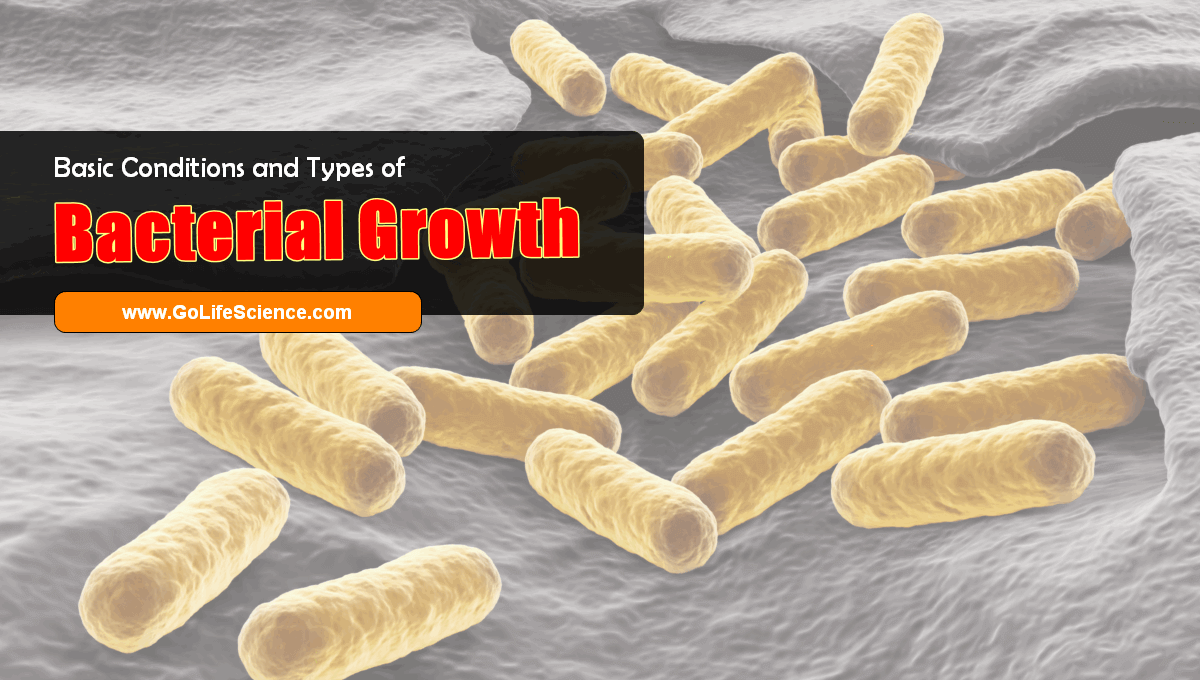
Microbial physiology is a fascinating and essential branch of microbiology that delves into the physiology of microorganisms, including bacteria, archaea, fungi, and protozoa. This field explores how these tiny organisms function, grow, and interact with their environments. Understanding microbial physiology is crucial for advancements in medicine, biotechnology, and environmental science. In this article, we will explore the microbial physiology definition, its relationship with genetics, and key techniques like the serial dilution method and the pour plate method.
Table of Contents
What is Microbial Physiology?
Microbial physiology is the study of the biological processes and functions that occur within microorganisms. It encompasses the metabolic pathways, growth requirements, and environmental adaptations that enable these organisms to thrive in diverse habitats. By understanding the physiology of microorganisms, scientists can develop new antibiotics, improve industrial fermentation processes, and address environmental challenges like pollution and climate change.

Key Aspects of Microbial Physiology
- Metabolism: Microorganisms exhibit a wide range of metabolic pathways, including aerobic and anaerobic respiration, fermentation, and photosynthesis. These pathways allow them to convert nutrients into energy and biomass.
- Growth and Reproduction: Microbial growth involves cell division, DNA replication, and the synthesis of cellular components. Understanding these processes is essential for controlling microbial populations.
- Environmental Adaptations: Microorganisms can survive in extreme environments, such as high temperatures, acidic conditions, and high salinity. Studying these adaptations provides insights into the limits of life on Earth and beyond.
Microbial Physiology and Genetics
| Aspect | Microbial Physiology | Microbial Genetics |
|---|---|---|
| Focus | Biological processes and functions | Genetic material and inheritance |
| Techniques | Metabolic assays, growth curve analysis | DNA sequencing, gene editing |
| Applications | Antibiotic development, bioremediation | Genetic engineering, synthetic biology |
The intersection of microbial physiology and genetics is one of the most exciting and rapidly advancing areas in life sciences. This field explores how the genetic makeup of microorganisms influences their physiological processes and, conversely, how physiological adaptations can drive genetic changes. By understanding the intricate relationship between microbial physiology and genetics, researchers can unlock new possibilities in medicine, biotechnology, and environmental science.
The Role of Genetics in Microbial Physiology
Genetics forms the foundation of microbial physiology. The genetic material of microorganisms, typically DNA (or RNA in some viruses), encodes the instructions for all cellular processes. These processes include metabolism, growth, reproduction, and responses to environmental stimuli. By studying the genes responsible for these functions, scientists can gain insights into how microorganisms survive and thrive in diverse environments.
Key Genetic Concepts in Microbial Physiology
- Gene Expression: The process by which information from a gene is used to synthesize functional gene products, such as proteins or RNA molecules. Gene expression is tightly regulated and can be influenced by environmental factors.
- Metabolic Pathways: Genes encode enzymes that catalyze metabolic reactions. Understanding these pathways allows researchers to manipulate microbial metabolism for industrial or therapeutic purposes.
- Horizontal Gene Transfer (HGT): Microorganisms can acquire new genetic material from other organisms through processes like transformation, transduction, and conjugation. HGT plays a significant role in the evolution of microbial physiology and antibiotic resistance.
| Process | Description | Example |
|---|---|---|
| Gene Expression | Transcription and translation of genetic information into functional products | Production of enzymes for metabolic pathways |
| Metabolic Pathways | Series of biochemical reactions controlled by enzymes encoded by genes | Glycolysis, Krebs cycle |
| Horizontal Gene Transfer | Transfer of genetic material between organisms | Acquisition of antibiotic resistance genes |
Microbial Physiology and Genetic Engineering
Advances in genetic engineering have revolutionized the study of microbial physiology. Techniques like CRISPR-Cas9, recombinant DNA technology, and synthetic biology allow scientists to precisely manipulate microbial genomes. These tools enable researchers to study gene function, engineer microorganisms for industrial applications, and develop novel therapies.
Applications of Genetic Engineering in Microbial Physiology
- CRISPR-Cas9: This powerful gene-editing tool allows for precise modifications to microbial genomes. It has been used to study gene function, create genetically modified organisms (GMOs), and develop gene therapies.
- Recombinant DNA Technology: This technique involves inserting foreign DNA into a microorganism’s genome. It is widely used in the production of recombinant proteins, such as insulin and growth hormones.
- Synthetic Biology: This emerging field combines biology and engineering to design and construct new biological parts, devices, and systems. Synthetic biology has applications in biofuel production, bioremediation, and drug development.
| Technique | Description | Application |
|---|---|---|
| CRISPR-Cas9 | Gene-editing tool for precise modifications to DNA | Study gene function, develop gene therapies |
| Recombinant DNA Technology | Insertion of foreign DNA into a microorganism’s genome | Production of recombinant proteins |
| Synthetic Biology | Design and construction of new biological parts and systems | Biofuel production, bioremediation |
Case Study: Microbial Physiology and Antibiotic Resistance
Antibiotic resistance is a prime example of the interplay between microbial physiology and genetics. Microorganisms can develop resistance to antibiotics through genetic mutations or the acquisition of resistance genes via horizontal gene transfer. Understanding the physiological mechanisms behind antibiotic resistance is crucial for developing new treatments and combating resistant infections.
Mechanisms of Antibiotic Resistance
- Enzymatic Degradation: Some bacteria produce enzymes that break down antibiotics, rendering them ineffective. For example, beta-lactamase enzymes degrade beta-lactam antibiotics like penicillin.
- Efflux Pumps: These are proteins that actively pump antibiotics out of the cell, reducing their intracellular concentration.
- Target Modification: Mutations in the genes encoding antibiotic targets can reduce the binding affinity of the drug. For example, mutations in the ribosomal RNA can confer resistance to macrolide antibiotics.
| Mechanism | Description | Example |
|---|---|---|
| Enzymatic Degradation | Production of enzymes that break down antibiotics | Beta-lactamase enzymes |
| Efflux Pumps | Proteins that pump antibiotics out of the cell | Tetracycline efflux pumps |
| Target Modification | Mutations in genes encoding antibiotic targets | Ribosomal RNA mutations |
The Future of Microbial Physiology and Genetics
The integration of microbial physiology and genetics holds immense potential for future advancements. Emerging technologies like single-cell genomics, metagenomics, and systems biology are providing new insights into the complex interactions between genes and physiology. These advancements are paving the way for personalized medicine, sustainable biotechnologies, and innovative solutions to global challenges.
Emerging Technologies
- Single-Cell Genomics: This technology allows researchers to study the genomes of individual microbial cells, providing insights into cellular heterogeneity and gene expression.
- Metagenomics: The study of genetic material recovered directly from environmental samples. Metagenomics enables the exploration of microbial communities and their functional potential.
- Systems Biology: An interdisciplinary approach that integrates data from genomics, proteomics, and metabolomics to model and understand complex biological systems.
| Technology | Description | Application |
|---|---|---|
| Single-Cell Genomics | Study of genomes of individual microbial cells | Understanding cellular heterogeneity |
| Metagenomics | Study of genetic material from environmental samples | Exploring microbial communities |
| Systems Biology | Integration of data from genomics, proteomics, and metabolomics | Modeling complex biological systems |
The study of microbial physiology and genetics is a dynamic and interdisciplinary field that continues to drive innovation in science and technology. By understanding the genetic basis of microbial physiology, researchers can develop new therapies, engineer microorganisms for industrial applications, and address pressing environmental issues. Techniques like CRISPR-Cas9, recombinant DNA technology, and synthetic biology are revolutionizing our ability to manipulate and study microorganisms.
Techniques in Microbial Physiology
Several laboratory techniques are essential for studying microbial physiology. Among these, the serial dilution method for isolation of bacteria and the pour plate method are widely used for isolating and enumerating bacteria.
Serial Dilution Method
The serial dilution method is a fundamental technique in microbiology used to reduce the concentration of a microbial sample to a manageable level. This method is particularly useful for isolating pure cultures of bacteria.
Steps in the Serial Dilution Method
- Prepare Dilution Series: Start with a concentrated microbial sample and sequentially dilute it in sterile water or broth.
- Plate the Dilutions: Transfer a small volume of each dilution onto an agar plate.
- Incubate: Allow the plates to incubate at an appropriate temperature for microbial growth.
- Count Colonies: After incubation, count the colonies on the plates to estimate the original concentration of the sample.
| Dilution Factor | Volume of Sample (mL) | Volume of Diluent (mL) | Final Concentration |
|---|---|---|---|
| 1:10 | 1.0 | 9.0 | 10^-1 |
| 1:100 | 1.0 (from 1:10) | 9.0 | 10^-2 |
| 1:1000 | 1.0 (from 1:100) | 9.0 | 10^-3 |
| 1:10,000 | 1.0 (from 1:1000) | 9.0 | 10^-4 |
Pour Plate Method
The pour plate method is another essential technique in microbiology physiology. It involves mixing a diluted microbial sample with molten agar and pouring the mixture into a petri dish. This method is particularly useful for counting viable microorganisms and isolating pure cultures.
Steps in the Pour Plate Method
- Prepare the Sample: Dilute the microbial sample using the serial dilution method.
- Mix with Agar: Combine a small volume of the diluted sample with molten agar.
- Pour into Petri Dish: Pour the mixture into a sterile petri dish and allow it to solidify.
- Incubate: Incubate the plate at an appropriate temperature for microbial growth.
- Count Colonies: After incubation, count the colonies to estimate the microbial concentration.
| Aspect | Serial Dilution Method | Pour Plate Method |
|---|---|---|
| Purpose | Reduce microbial concentration | Isolate and count viable microorganisms |
| Ease of Use | Simple and quick | Requires more steps and materials |
| Accuracy | Less accurate for low concentrations | More accurate for counting viable cells |
Applications of Microbial Physiology
The study of microbial physiology has far-reaching implications across various fields, from medicine and biotechnology to environmental science and agriculture. By understanding the metabolic processes, growth requirements, and environmental adaptations of microorganisms, scientists can harness their capabilities to address some of the world’s most pressing challenges. Below, we explore the diverse applications of microbial physiology in detail.
1. Medicine: Fighting Diseases and Developing Therapies
One of the most significant applications of microbial physiology is in the field of medicine. Microorganisms play a dual role in human health—they can cause diseases, but they can also be used to develop life-saving treatments.
- Antibiotic Production: Microorganisms like Penicillium and Streptomyces are used to produce antibiotics such as penicillin and streptomycin. Understanding the physiology of microorganisms helps optimize the conditions for antibiotic production and combat antibiotic resistance.
- Vaccine Development: Microbial physiology is critical in vaccine development. For example, attenuated (weakened) strains of pathogens are used to create vaccines that stimulate the immune system without causing disease.
- Probiotics and Gut Health: The study of gut microbiota and their metabolic activities has led to the development of probiotics, which promote digestive health and boost immunity.
| Application | Description | Example |
|---|---|---|
| Antibiotic Production | Use of microorganisms to produce antibiotics | Penicillin from Penicillium fungi |
| Vaccine Development | Use of attenuated pathogens to create vaccines | Polio vaccine |
| Probiotics | Use of beneficial bacteria to improve gut health | Lactobacillus in yogurt |
2. Biotechnology: Industrial and Commercial Applications
Microorganisms are the workhorses of biotechnology, thanks to their diverse metabolic capabilities. The physiology of microorganisms is harnessed to produce valuable products and processes.
- Biofuel Production: Microorganisms like Saccharomyces cerevisiae (yeast) and Clostridium species are used to produce biofuels such as ethanol and butanol. These biofuels are sustainable alternatives to fossil fuels.
- Enzyme Production: Microbes are used to produce industrial enzymes, such as amylases, proteases, and lipases, which are used in food processing, detergents, and pharmaceuticals.
- Bioplastics: Certain bacteria, like Cupriavidus necator, can produce biodegradable plastics such as polyhydroxyalkanoates (PHAs), reducing reliance on petroleum-based plastics.
| Application | Description | Example |
|---|---|---|
| Biofuel Production | Use of microorganisms to produce sustainable fuels | Ethanol production by Saccharomyces cerevisiae |
| Enzyme Production | Microbial synthesis of industrial enzymes | Amylases for starch processing |
| Bioplastics | Production of biodegradable plastics by bacteria | PHAs by Cupriavidus necator |
3. Environmental Science: Bioremediation and Waste Management
Microorganisms are nature’s recyclers, capable of breaking down pollutants and organic waste. The applications of microbial physiology in environmental science are vital for maintaining ecological balance and addressing pollution.
- Bioremediation: Microbes are used to clean up oil spills, heavy metal contamination, and pesticide residues. For example, Pseudomonas species can degrade hydrocarbons in oil spills.
- Wastewater Treatment: Microbial communities in wastewater treatment plants break down organic matter and remove harmful substances, making water safe for reuse or release into the environment.
- Carbon Sequestration: Certain microorganisms can capture and store carbon dioxide, helping mitigate climate change.
| Application | Description | Example |
|---|---|---|
| Bioremediation | Use of microbes to clean up pollutants | Pseudomonas in oil spill cleanup |
| Wastewater Treatment | Microbial degradation of organic matter in wastewater | Activated sludge process |
| Carbon Sequestration | Microbes capturing and storing CO2 | Cyanobacteria in carbon capture |
4. Agriculture: Enhancing Crop Yield and Soil Health
Microbial physiology plays a crucial role in sustainable agriculture by improving soil fertility, protecting crops, and enhancing plant growth.
- Nitrogen Fixation: Bacteria like Rhizobium form symbiotic relationships with leguminous plants, converting atmospheric nitrogen into a form that plants can use.
- Biopesticides: Microorganisms such as Bacillus thuringiensis are used as biopesticides to control insect pests, reducing the need for chemical pesticides.
- Plant Growth Promotion: Certain microbes produce hormones and other compounds that stimulate plant growth and improve nutrient uptake.
| Application | Description | Example |
|---|---|---|
| Nitrogen Fixation | Conversion of atmospheric nitrogen into plant-usable forms | Rhizobium in legume roots |
| Biopesticides | Use of microbes to control pests | Bacillus thuringiensis as a biopesticide |
| Plant Growth Promotion | Microbes producing growth-promoting compounds | Azospirillum producing auxins |
5. Food Industry: Fermentation and Food Safety
The food industry relies heavily on microbial physiology for fermentation, preservation, and ensuring food safety.
- Fermented Foods: Microorganisms are used to produce fermented foods like yogurt, cheese, beer, and sauerkraut. For example, Lactobacillus species are used in yogurt production.
- Food Preservation: Microbes like Lactobacillus and Pediococcus produce lactic acid, which preserves foods by inhibiting the growth of spoilage organisms.
- Pathogen Detection: Understanding the physiology of foodborne pathogens helps develop methods to detect and control them, ensuring food safety.
| Application | Description | Example |
|---|---|---|
| Fermented Foods | Use of microbes to produce fermented products | Yogurt production by Lactobacillus |
| Food Preservation | Microbial production of preservatives | Lactic acid production by Lactobacillus |
| Pathogen Detection | Detection and control of foodborne pathogens | Salmonella detection methods |
6. Energy Production: Microbial Fuel Cells and Biohydrogen
Microbial physiology is being explored for innovative energy solutions, such as microbial fuel cells and biohydrogen production.
- Microbial Fuel Cells: Microorganisms in microbial fuel cells convert organic matter into electricity, offering a sustainable energy source.
- Biohydrogen Production: Certain bacteria and algae can produce hydrogen gas through metabolic processes, providing a clean and renewable energy source.
| Application | Description | Example |
|---|---|---|
| Microbial Fuel Cells | Microbes generating electricity from organic matter | Geobacter in microbial fuel cells |
| Biohydrogen Production | Microbial production of hydrogen gas | Clostridium species producing hydrogen |
7. Research and Education: Advancing Scientific Knowledge
The study of microbial physiology is fundamental to scientific research and education. It provides insights into the basic principles of life and serves as a model for studying more complex organisms.
- Model Organisms: Microbes like Escherichia coli and Saccharomyces cerevisiae are used as model organisms to study cellular processes and genetics.
- Teaching Tools: Techniques like the serial dilution method and the pour plate method are essential tools for teaching microbiology in classrooms and laboratories.
The applications of microbial physiology are vast and transformative, impacting nearly every aspect of modern life. From developing life-saving medicines and sustainable biofuels to cleaning up environmental pollutants and enhancing agricultural productivity, microorganisms are indispensable allies in science and industry. By continuing to explore the physiology of microorganisms, we can unlock even more innovative solutions to global challenges.
Conclusion
Microbial physiology is a vital field that bridges the gap between microbiology and biochemistry. By studying the physiology of microorganisms, we gain valuable insights into their metabolic processes, growth requirements, and environmental adaptations. Techniques like the serial dilution method and the pour plate method are essential tools for isolating and studying these organisms. Whether you’re a student or a teacher, understanding microbial physiology opens up a world of possibilities in science and technology.
Whether you’re a student, teacher, or researcher, understanding the applications of microbial physiology opens up a world of opportunities to make a meaningful impact. Dive into this fascinating field and discover how microorganisms are shaping the future of science and technology!
By incorporating these concepts and techniques into your studies, you can contribute to advancements in medicine, biotechnology, and environmental science. So, dive into the fascinating world of microbial physiology and explore the incredible capabilities of microorganisms!
References of Microbial Physiology
- Learn more about microbial growth and cultivation techniques
- Explore the fundamentals of microbial physiology
- Discover recent advancements in microbial metabolism
- Understand the role of microbial physiology in metabolic engineering
- Explore anaerobic microbial physiology and its applications
- Dive deeper into microbial physiology with this practical guide
- Learn about bacterial physiology and its medical significance
- Browse the latest research on microbial physiology





